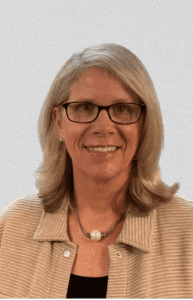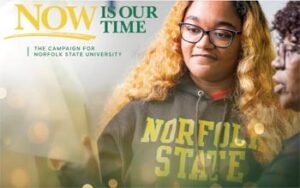

From the desk of
Jaci Thiede ¦ Partner
Use Your Superpower
Odds are, if you’re subscribed to this newsletter, you are someone I consider a “civic champion”. You likely work for, volunteer for and/or philanthropically support non-profit organizations with missions that directly or indirectly make the world a better place for humans, animals and/or the environment. I sincerely applaud and appreciate the work you do.
While I am not a gambler, I’ll wager that being a civic champion is pretty much a part of your DNA. You probably can’t help but be enthusiastic and vocal when it comes to the things you care about. And that is exactly why my message today is the importance of exercising your voice by voting in your local, state and national elections.
Voting is a superpower! You have a chance to use it to help shape the future of your communities and the organizations you hold dear. Elections—at all levels—can have a direct impact on the policies and laws that govern mission-driven institutions. Our elected officials make decisions that affect the laws, regulations and funding that impact the ability of the non-profit organizations we believe in to fulfill their missions. Your vote tells those elected officials what is important to you.
So, with voting season underway, I simply encourage all you civic champions to put your enthusiastic voice to work and use your superpower to vote your values. And of course, use that same voice to encourage your colleagues, neighbors, friends and family to do the same.
Voting is a way to be a part of shaping the future of our communities. It’s such a privilege, I hope you will embrace your superpower and celebrate it by casting your vote for the things you care about most.
Happy voting!
Client Partner Historic Campaign
 Norfolk State University (NSU) launched the public phase of what is its “most ambitious” fundraising campaign in the institution’s history. The Now Is Our Time campaign seeks to raise $90 million in celebration of the university’s 90th anniversary next year. NSU has already raised about 90% of the goal during the “quiet phase.” Its only other major campaign effort was 30 years ago and raised $15 million.
Norfolk State University (NSU) launched the public phase of what is its “most ambitious” fundraising campaign in the institution’s history. The Now Is Our Time campaign seeks to raise $90 million in celebration of the university’s 90th anniversary next year. NSU has already raised about 90% of the goal during the “quiet phase.” Its only other major campaign effort was 30 years ago and raised $15 million.
“When we talk about now is our time for our institution, it is a call to action,” NSU president Javaune Adams-Gaston said. “It really is an opportunity for people to think about the university and think about its impact in the community and in the higher education world.”
We are honored to provide consulting services to NSU during this exciting time in the university’s history!
According to the report, a substantial gender gap also persists in the leadership of larger nonprofits. While women are well represented as CEOs of smaller nonprofits—58% among nonprofits with budgets of $250,000 or less and 61% for nonprofits with budgets between $250,000 and $500,000—among large nonprofits, women accounted for only 29% of CEOs.
Things to Do When You Get an Anonymous DAF Gift
When funds are simply transferred electronically to a charity’s bank account, groups may not think to ask the bank whether there’s accompanying information about the donor and could be hard to find. It is important that data-entry and gift-processing staff look for donor data.
Ask DAF sponsors to check whether donors intended to withhold their names.
Don’t assume donors want to keep their identity from you. As DAF account holders make gifts online through their accounts, the digital interface often asks if the donation should be anonymous and think that when they click ‘anonymous,’ the charity will still get their name and address, but the charity just won’t publicize it.
Ask the DAF sponsor to forward your thank-you note to the donor.
Not all sponsors will serve as messengers, but many community foundations and smaller sponsors will.
Consider using a DAF payment processor.
One example: DAFpay can be embedded on the donation pages of organizations. Donors can make gifts directly on the page without visiting their DAF account, and nonprofits can customize the donation form to collect any data.
Safeguard the identity of anonymous donors within your organization.
Secure your donor database and take care with anonymous donors to create a more secure record internally so that your organization reduces the risk of that donor’s name getting known by staff as well.
Assume anonymous donors are watching your organization.
It’s typically difficult to know whether an anonymous donor is making a gift in response to a particular message or communications channel. As a result, you have to double your efforts to hit the mark on all your communications.
COP, 10-8
Dos and Don’ts to Show How Your Nonprofit Is Making a Difference
Impact has long been a buzzword in the nonprofit world, but many groups are still wrestling with how best to capture data that proves they’re making a difference — and share those results with donors in ways that are informative and interesting. More than 70 percent of nonprofit leaders think measuring impact is important, but only 20 percent say they’re very good at it, one survey finds.
Here are tips that can help you get started.
Define what impact means to your organization.
Nonprofits often make decisions about evaluation based on what their funders want, not what they’re trying to achieve. Before deciding what to measure, get really clear on that strategy. You also need to understand that impact is not the same thing as activities, like the number of people you reached or the amount of money you raised.
Impact reports require advance planning; allow time to lay the groundwork.
If you want to create an impact report, start planning early. Don’t worry if you don’t have every metric you want at first. You can add more later, but it’s important to start somewhere.
Don’t let the potential costs of data-tracking hold you back.
The key thing is consistency. Even if your nonprofit has never gathered data before, the sooner you can start, the better prepared you’ll be to show results in a year or two. Collect more than you think you need at first, and narrow down your metrics as you go.
Blend quantitative and qualitative data.
Numbers are crucial — but shouldn’t be the only way you communicate your nonprofit’s impact. Not everyone who reads your report will want to see just a bunch of stats and charts without qualitative context. Try to bring your data to life in a variety of ways, including quotes or testimonials that illustrate your outcomes.
Be selective and strategic about what you share.
Don’t try to share all your results. Instead, focus on the strongest ones.
Put your data in context.
When sharing a stat, think about the broader story you can tell about that number to make it more meaningful. It can help to share stats in the context of progress over time.
Don’t start over every year.
Create a report that you can update each year. Creating a storytelling foundation like this that you can build on saves a lot of time and money over the long term.
Don’t share only the good news.
More and more funders want to know about what didn’t work. If something happened that wasn’t your fault, such as Covid-19 or a well-known event in your community that affected your work, don’t ignore it and pretend everything was normal. Talk about the negative effects and how you handled them.
COP, 9-23
We Know Colleges & Universities
For more than 35 years, Alexander Haas has been a fixture in the nonprofit community. We are honored to have worked with so many large and small college and universities; both public and private institutions, across the country. These schools that help mold today’s young adults into tomorrow’s leaders. Take a look at our list of higher education clients, past and present.
A Fresh Approach to Fundraising
Our services aren’t cookie cutter. We don’t operate with a boilerplate, merely changing names and locations. We craft each and every service we provide to match your organization’s unique needs, wants and abilities. We work hard and expect you to do the same. Together we can help you transform your institution, your fundraising, and the community you serve.
Whether your need is in Capital Campaign, Annual Fund Campaign, Major Gifts, Leadership Annual Giving, Planned Giving or all of the above, we take a fresh approach to nonprofit fundraising.


